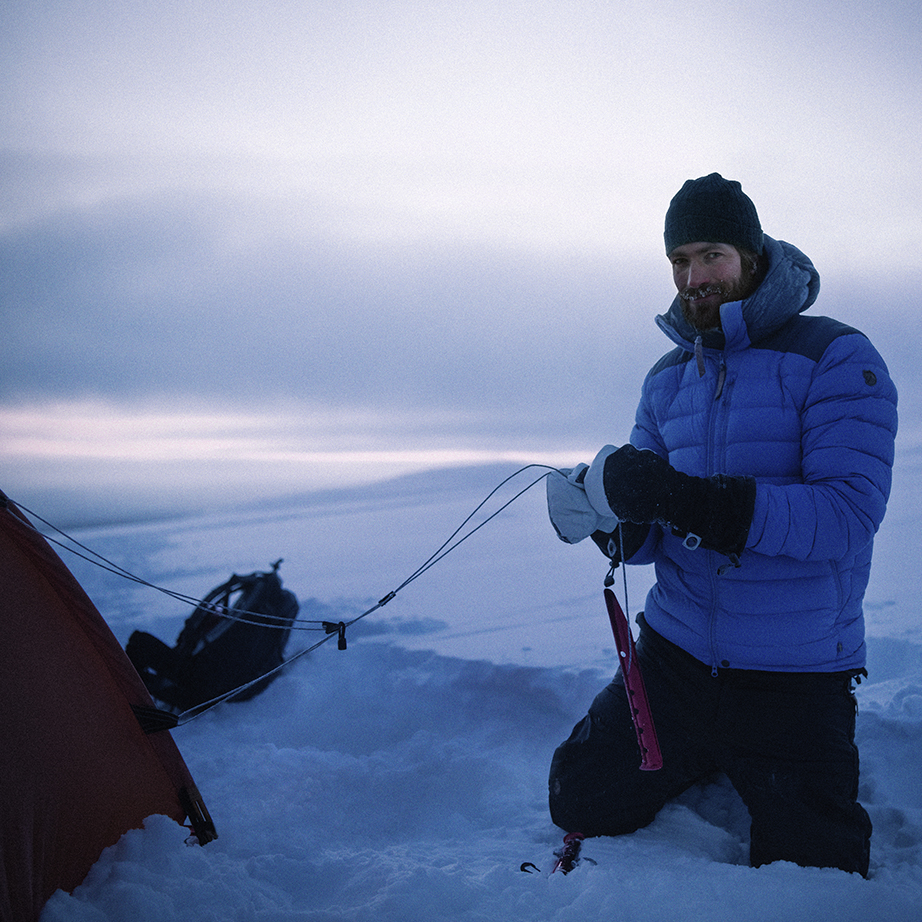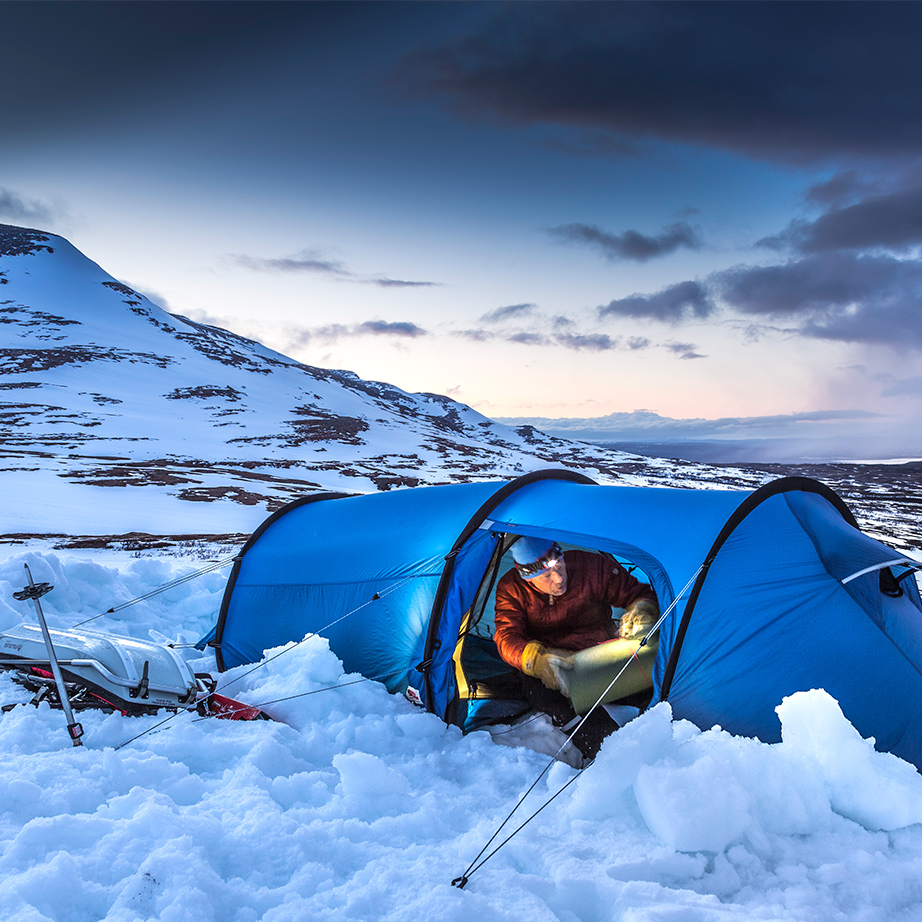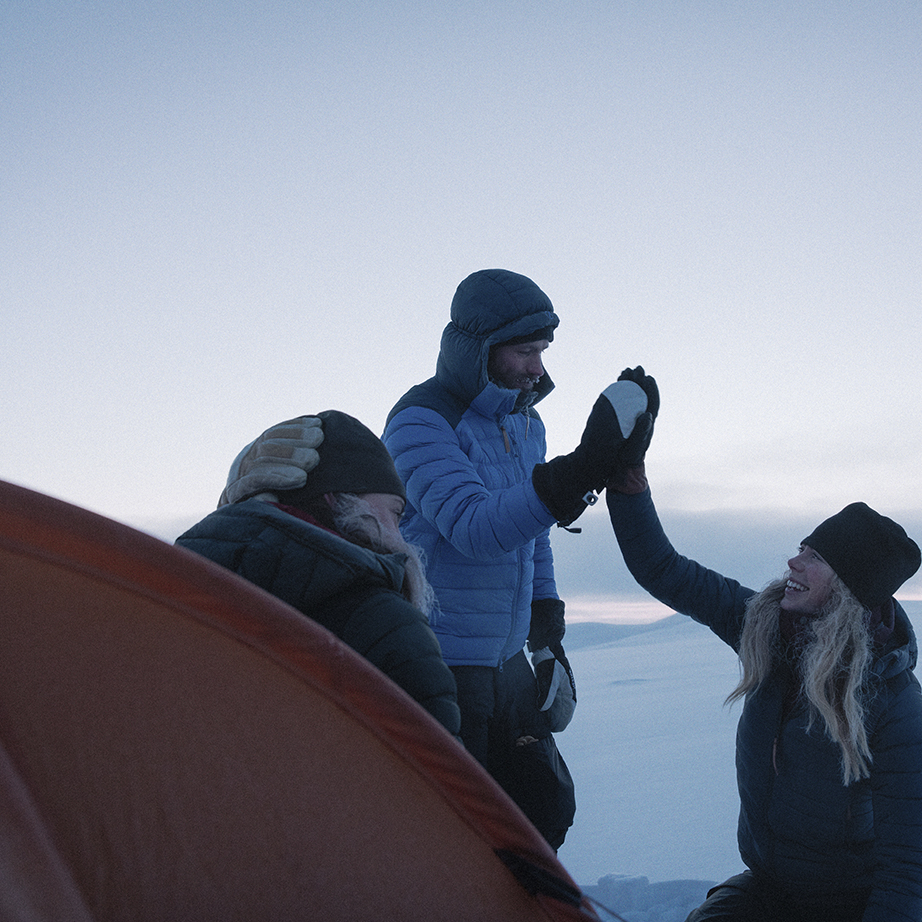Top 5 tips for tenting in snow
With winter around the corner, here are our top 5 tips for tenting in the snow.
With winter just around the corner it is the perfect time to talk about how to get outdoors and set up your tent in the snow. Many people, especially those without much experience sleeping outdoors in colder conditions, feel nervous about sleeping in tents in the winter. Some people love it, while other’s don’t. But we believe with the correct knowledge, a little bit of practice, and the right equipment tenting in the snow is an amazing experience.
Here are our top 5 tips to make sure you have the best night sleep possible in the snow.

1. Find the perfect place to pitch your tent: safe and away from strong winds.
Choosing a site to pitch your tent that is sheltered and away from the wind is essential when tenting in the snow. An important element in pitching your tent in winter conditions safely is to steer clear of tenting in steep ravines, at the base of steep snow covered slopes or under cornices. Avalanches are much more dangerous than wind and drifting snow, so don’t be afraid to choose a higher position that is perhaps less sheltered and where snowdrifts might build up around the tent.

2. Identify the right snow depth to securely anchor your tent.
Be sure to find a snow depth that is sufficient to anchor the tent properly. Before inserting your pegs, pack down the snow with skis or snowshoes and let it harden for about 15 minutes around the full tent site. After the snow has hardened pitch your tent using snow pegs instead of regular pegs. Snow (or sand) pegs are used like regular tent pegs and can also be dug down horizontally as T-anchors. Stamp them into the snow and stamp down the area around them and let this freeze for 15 minutes before tightening the guylines.
Finally, place snow along the side of the tent facing the wind to prevent snow being blown up between the inner tent and flysheet. Make sure you anchor all ground loops and guylines properly. Snow can be tricky so it is a good idea to use as many anchoring points as possible to distribute the stresses when the wind picks up.

3. Use the right gear: choose a tent with a spacious vestibule and inner tent.
In winter environments you will likely be travelling with more equipment that take up more space inside the tent. It is essential to choose a tent that has a spacious vestibule and inner tent to accommodate that extra gear. It’s important that the ventilation system is designed to work from short end to short end and that you can close vents in case the snow is drifting. There is always the risk that parts of the dug-out vestibule can fill up with drifting snow so don’t leave loose equipment there. Keep all of your gear neatly organised in waterproof bags within your backpack - make sure to close all bags and backpacks properly before settling down for a good night’s sleep.
For longer trips in the Scandinavian wilderness you should always use double sets of poles in the pole sleeves. This gives extra stability – it is the combination of precipitation and wind which are the greatest threats when it comes to a tent collapsing.

The Polar Endurance 3 tent is an example of an exceptionally strong tunnel tent designed to winter expeditions. Included in a list of features is double sets of DAC poles, snow skirts and others that will simplify tent life in extreme conditions. To check out this tent for your next arctic adventure click here.
4. Use double sleeping mats in the winter.
It is a good idea to use double sleeping mats in the winter. We recommend one in foam and one inflatable. A pump should be used with the inflatable sleeping mat as a self inflating sleeping mat seldom inflates fully, especially when in use during winter.
It’s important to pair your sleeping mats with the right sleeping bag to help you get a good night’s sleep in extremely cold conditions. The Polar -20 or -30 sleeping bag is a well- insulated, down filled sleeping bag designed for use in winter conditions. To find out more click here.
5. Build a windbreak using snow before settling down for the night.
After the tent is securely in place, in a safe and sheltered location, build a wind-blocking wall about a meter high and shaped like an arrowhead with the point of the arrow pointing into the wind. This should be about three to five metres away from tent. This will break strong winds and also block drifting snow so that it won’t cover the tent.
When the tent is in place and the windbreak finished, dig a foot hole in the vestibule so you can comfortably sit at the edge of the inner tent with your feet in the vestibule. You can then crawl carefully into the inner tent onto a double layer of sleeping mats, lie down in your favourite sleeping position and shape the snow to ensure a comfortable night’s sleep.

Make sure you practice tenting in snow in safe and secure conditions, close to home or a mountain cabin, before venturing out into the wilderness. Camping is not just for summer, but there are certain considerations that are needed when tenting in the snow. It’s certainly not an exhaustive list, but if you follow these five basic tips, you are well on your way to a great night’s sleep in the snow!

Related Product
10 tips for getting your best night’s sleep in a tent
If not for your own sanity, for you camping buddies'. Because everyone prefers a happy camper.
A brief history of tents
The birth of the Fjällräven Thermo Tent in 1965 paved the way for Fjällräven's innovative tents of today.

